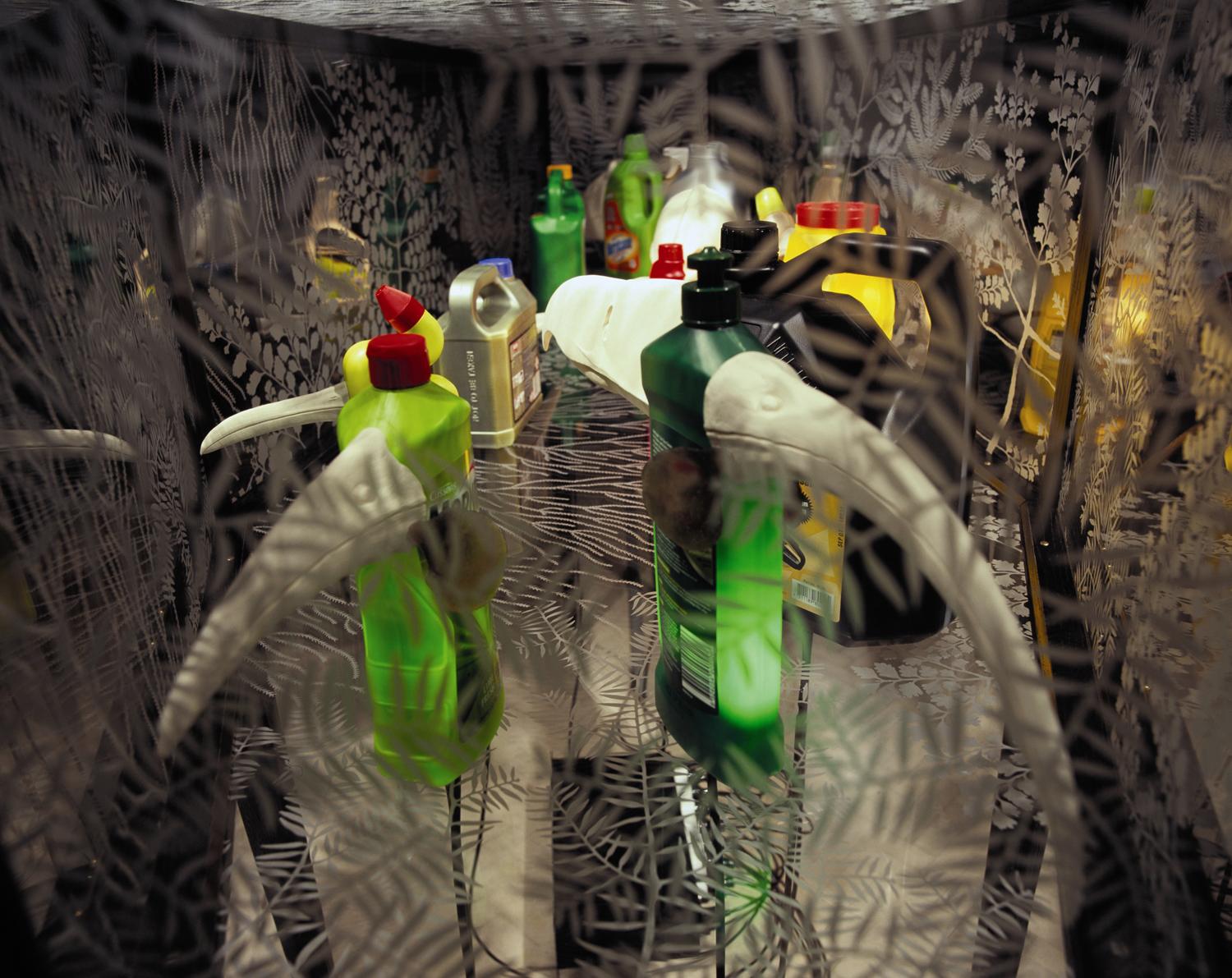Curator’s Quote
Fiona Hall’s recent work Mourning Chorus (2007-08) refers to the demise of the once ‘deafening’ song of New Zealand’s bird fauna. This work brings together characteristic aspects of Hall’s practice; flora and fauna are represented by reworked found objects and an ironic reference is made to the museological practice of collecting specimens—species that were once seen in nature are now only seen dead in the museum.
Eleven extinct or endangered bird species are represented by disposable plastic chemical containers animated by carved and cast resin beaks. Bottles of toxic chemicals that eradicate insects, for example ‘Beetle and Grub Killer’ stand as a metaphor for the destruction of bird species and light up
randomly as though flickering to life. All this is visible through the delicate vinyl patterns of native New Zealand plant foliage, spread across the glass panels. The complex circuit of wires below the coffin connects the birds to the earth, as though allowing the toxic liquid to drain into the ground, causing further destruction.
Mourning Chorus is a work born out of Hall’s interest in the environment and humanity’s impact on it. During an artist residency in New Zealand in 2006, she began to research the politics of bird extinction. Describing New Zealand “like a silent island”5, Hall recalled reading an entry dated 6 February 1770 from the diary of Joseph Banks, “This morning I was awaked by the singing of the birds ashore... the numbers of them were certainly very great…their voices were certainly the
[most] melodious wild musick I have ever heard, almost imitating small bells but with
the most tuneable silver sound imaginable.” 6
The discrepancy between Banks’ description of New Zealand and her own formed the conceptual framework for this artwork.
Isabel Finch, 2008
Research Information
Many Australian and New Zealand bird and plant species have evolved from a common ancestry, with shared origins from the time when both lands were part of the ancient, southern super continent known as Gondwana. However the subsequent post- Gondwanan development of New Zealand fauna took a very different path: an absence of native mammals and snakes enabled the
continued evolution of unique bird species, many of them flightless and ground-nesting.
Waves of human migration over the past 900 years have disrupted this vulnerable ecosystem.
The introduction of predatory animals such as rats, stoats and weasels has devastated the populations of numerous species. Land-clearance and the arrival of other environmental competitors such as possums and rabbits have hammered more nails into the coffin of the demise of New Zealand’s birds. Of the eleven bird species represented in Mourning Chorus nine are extinct, and two, the Kakapo and the Little Spotted Kiwi, are extinct in their native habitats but undergoing breeding programs on several of New Zealand’s off-shore island sanctuaries which
have been cleared of vermin. A number of the birds and all of the tree species represented in Mourning Chorus are closely related through their Gondwanan ancestry to others native to Australia.
Fiona Hall, 2008
Text from: Fiona Hall Force Field exhibition at the MCA in 2008

No comments:
Post a Comment